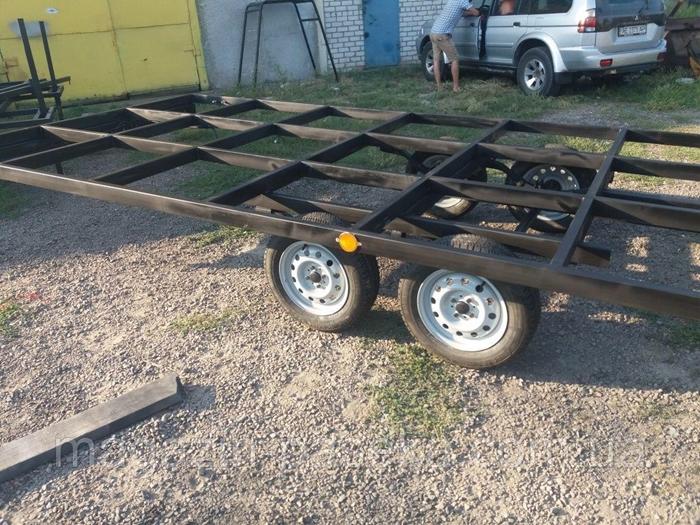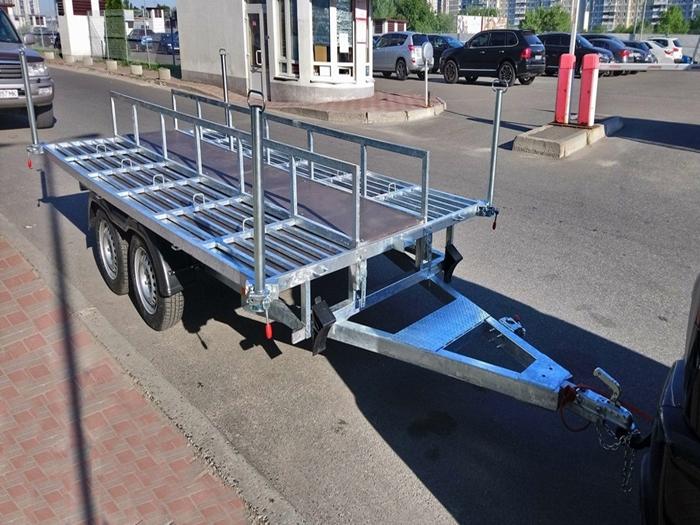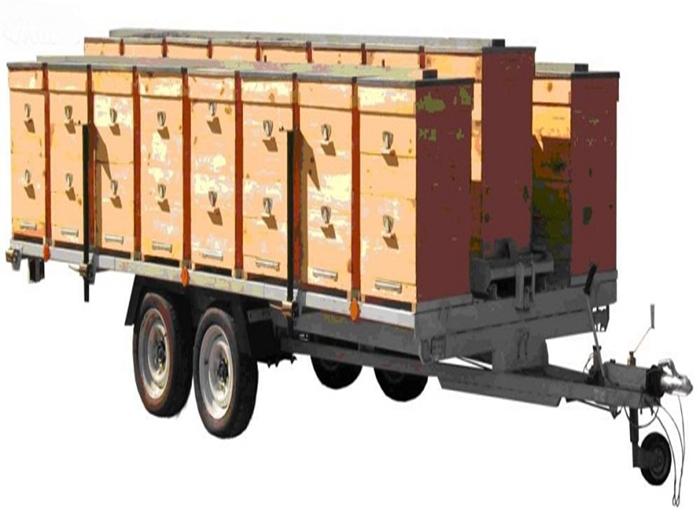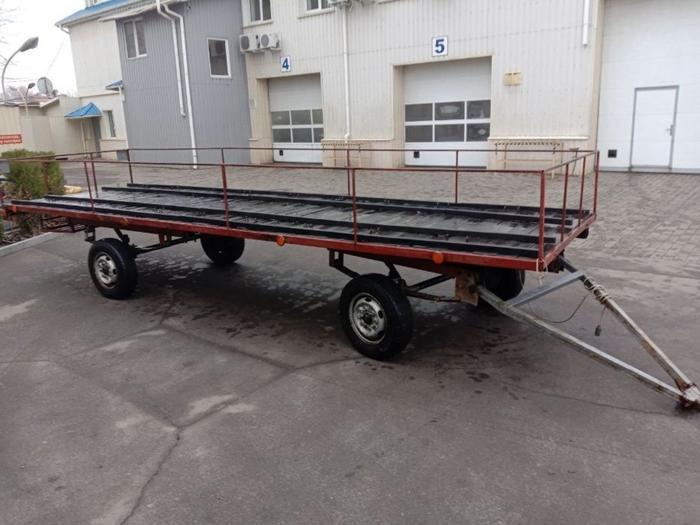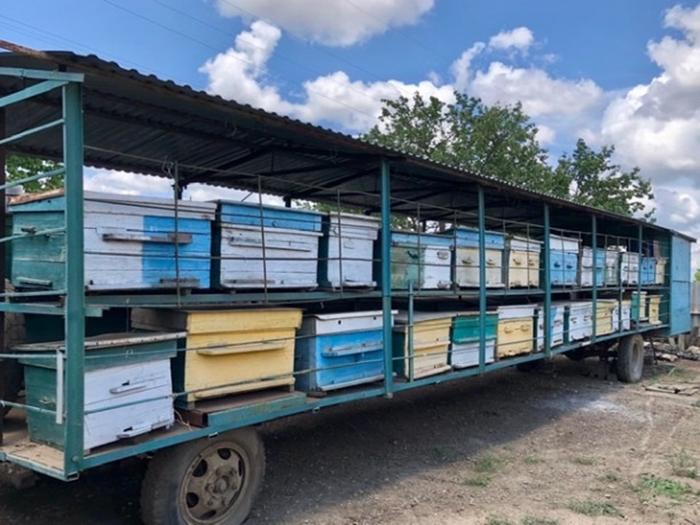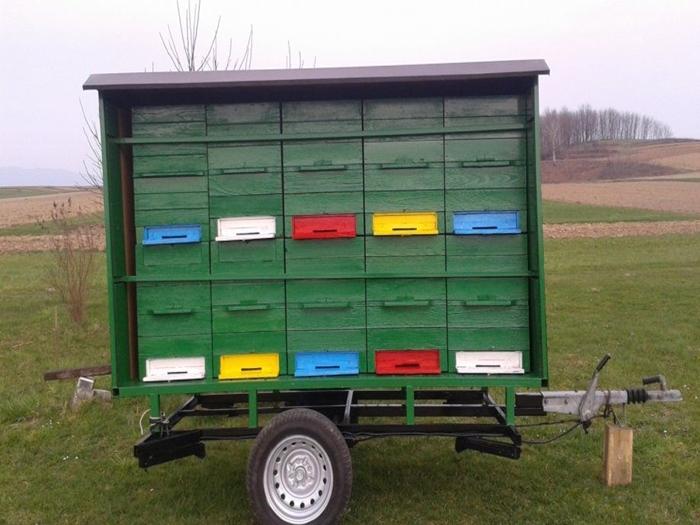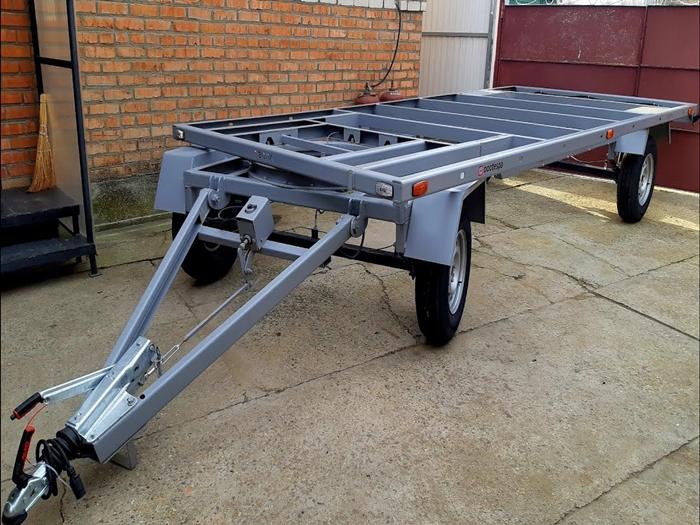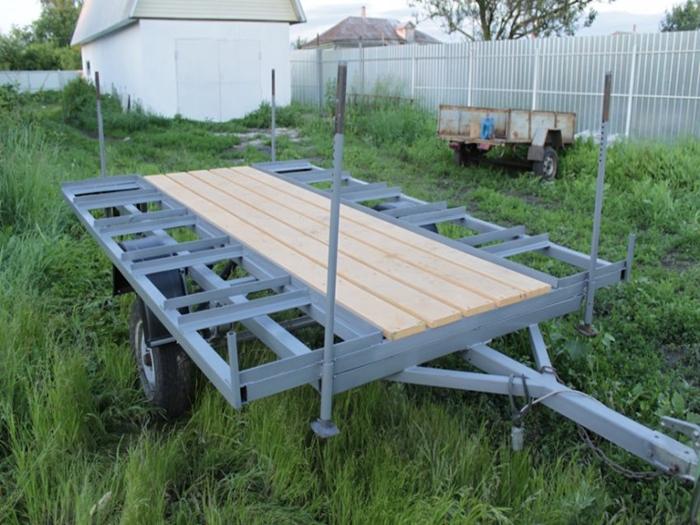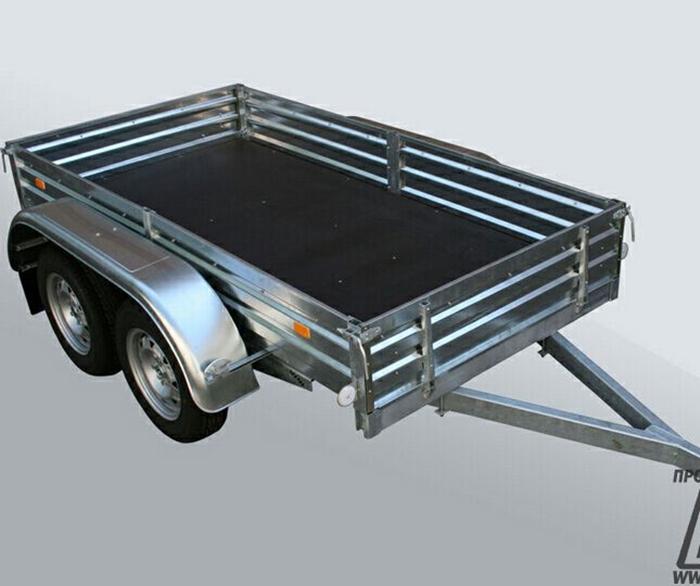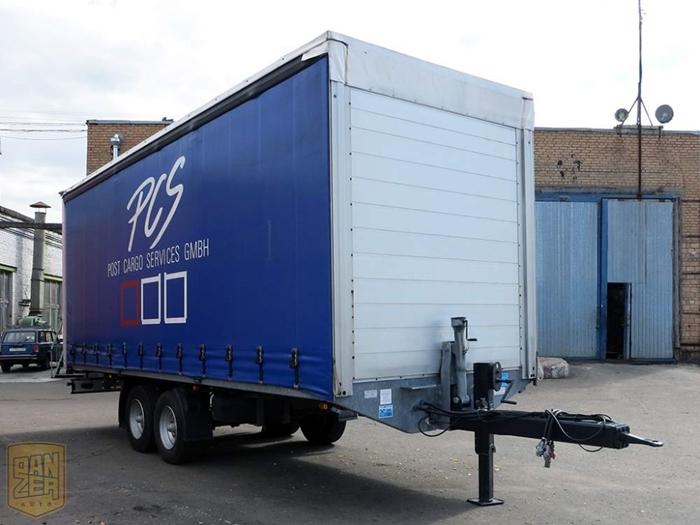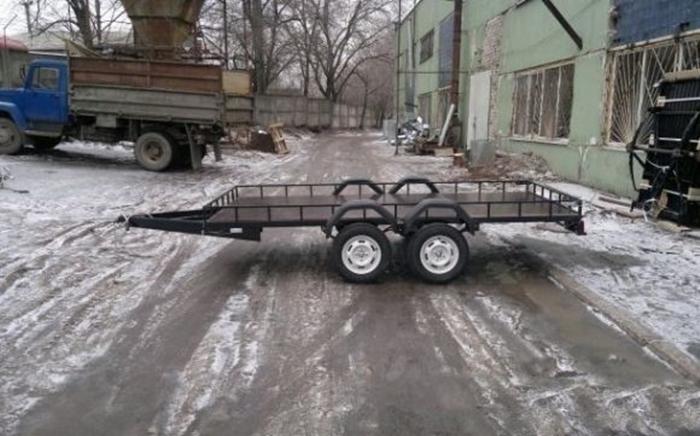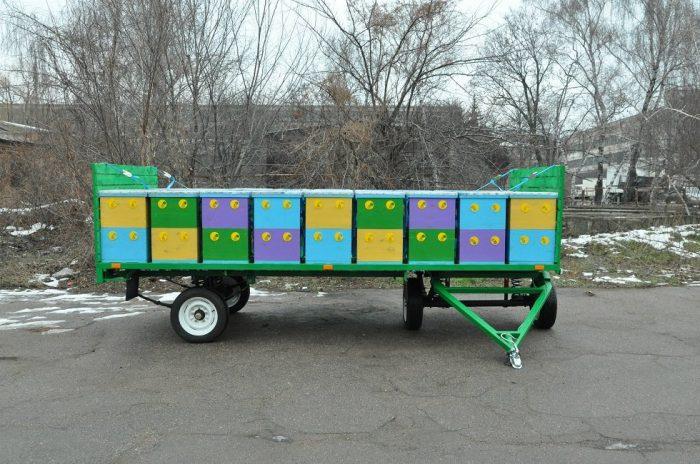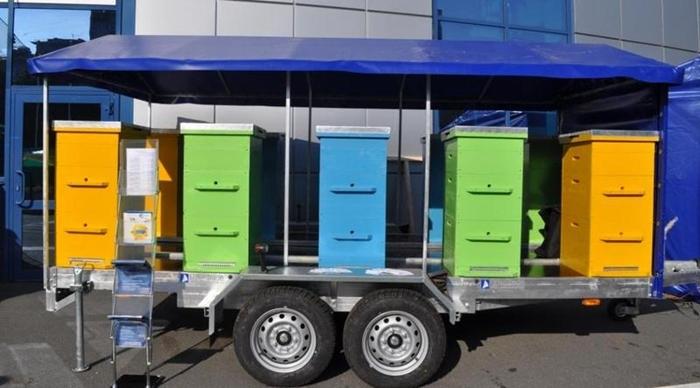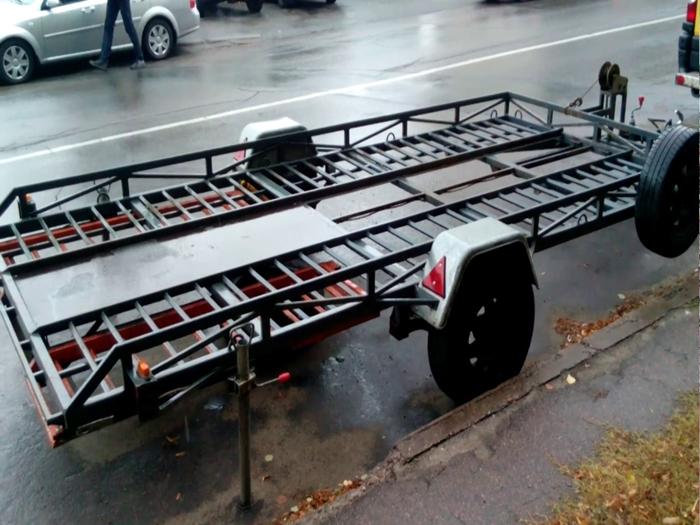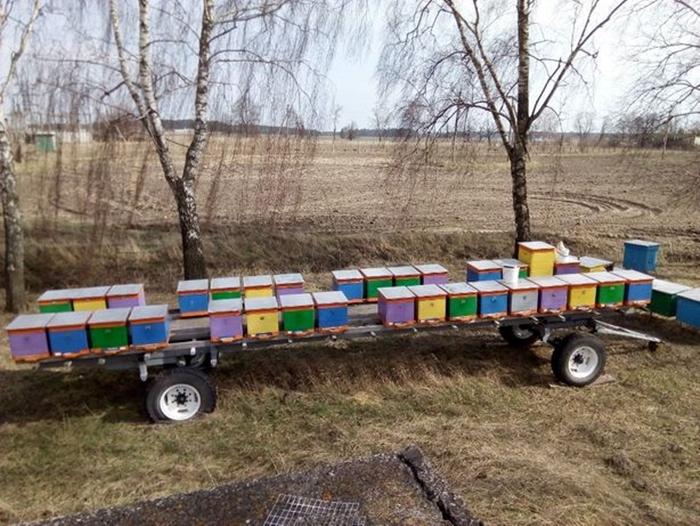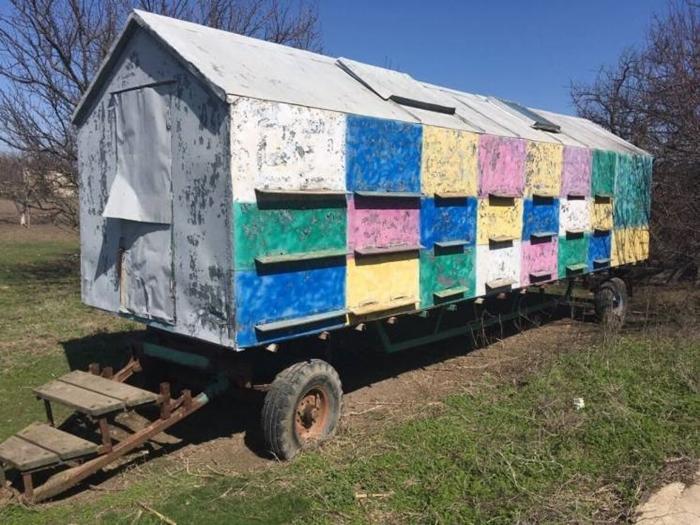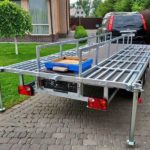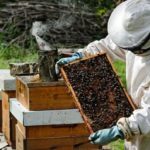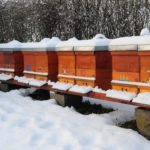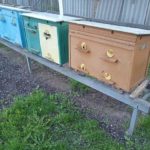In order for bees to bring more honey, they need to be provided with a good food supply. It is necessary to take the hives out into nature, closer to fields, gardens and herbs. To get there and remove all the hives, you need a bee trailer. Let's look at the types of devices that can be transported in a car. You can make a trailer with your own hands or choose from industrial products.
Types of trailers for transporting beehives
The trailer can be attached to a passenger car. There are other options - a bee pavilion or a platform. Let's look at each in more detail.
For passenger car
The beekeeper can use a regular trailer; it can accommodate up to 24 standard hives. They are installed on the vehicle in rows. You can improve the trailer by installing a canopy roof that will protect and hold the hives.
Pavilion
This is a structure for the joint installation of 10 to 40 hives. They stand on a common platform; if the pavilion is mobile, it is mounted on a van frame. It is easy to attach to the car and transport.
Platform
It can be single or multi-tiered. A roof is installed on top to protect against overheating from sunlight and rain. It is convenient because the hives do not need to be removed and put back to work with them.
DIY making
For an apiary, you can build a trailer with your own hands. Why you will need to find a frame on the chassis, as well as:
- profile pipe 25×50 mm – 12 m and 20×40 mm – 24 m;
- corners 4×180 mm – 2 pcs. and 4×60 mm – 10 pcs.;
- plastic panels 10×180 cm – 20 pcs.;
- sheet of steel, depends on the size of the product;
- iron loops – 10 pcs.;
- round pipe 20×240 mm – 3 pcs.;
- bearings – 8 pcs.;
- plywood sheet with a thickness of 16 mm for laying on the bottom of the vehicle.
How to make a trailer, sequence of work:
- Weld rectangular pipes to the base to increase the frame by 1-1.5 m.
- From rectangular pipes, weld a base frame from a 25x50 mm pipe. The size of the structure is 2.4x1.8 m.
- For reliability, 20x40 mm profiles need to be welded every 0.5 m across the base.
- Secure it to the frame by welding the structures to it.
- Cut and weld a slide from a 25x50 mm pipe on which the hives are installed.
- From 4x60 mm corners, construct places for installing hives, welding them to the bottom of the trailer. There should be 5 places on each side.
- Cover the bottom with sheet iron.
- Distribute the bearings evenly over the base and install the slide on them.
- Place a plywood sheet on top of the metal sheet.
- Make racks from 20x40 mm pipes at the corners of the vehicle. The height of the racks is not lower than 1.55 m.
- In place of the slide, also weld racks, but with a height of 1.65 m.
- Reinforce the structure with a round pipe 20x240 mm, pulling it through the drawbar.
- Weld two 4x180 mm corners on each side of this pipe.
This will complete the work.
Selection of ready-made solutions
But if you can’t assemble your own trailer, you can buy a ready-made one, made in production. Let's consider several options.
Trailer MZSA 817730.001
It is considered one of the best for beekeeping purposes. Stable, covered with plywood and galvanized metal, moving parts are also treated with zinc. The front and back walls open.
Withstands a moving weight of 950 kg.
Tandem trailer
Due to the large width, it is possible to leave space for a passage between two rows of hives. There is a rolling and spare wheel, and straps that secure the load. The height of the structure is 1.3 m, making it easier to install the hives and unload them. For transportation, 1 row of hives is installed; if the trailer is used as a platform, then up to 4 identical tiers can be installed.
Cargo trailer 7135 “Beekeeper”
Equipped with a powerful spring suspension specifically for use on bad roads.It has sides 15 cm high, lifts 1 ton of cargo, and the bottom is corrosion resistant.
Trailer "Apiary saddle-24"
You can place 24 hives on it. This model has an additional retractable part that can accommodate 8 hives. It has a coasting brake.
Trailer for transporting beehives MZSA
The platform is single-axle, the rear and front sides can be installed horizontally. A trailer can be used to transport and support families. The total weight of the trailer with cargo is 1260 kg. The moving parts are treated with an anti-corrosion compound. Near the sides there are profiles where hives are installed. For stability, the structure can rest on 4 supports.
Transportation rules
Weak colonies should not be transported; the best time for transportation is spring and autumn, when the bees become stronger and quickly settle into the new territory. Along with the hives, you need to take the necessary equipment: smoker and fuel, burlap, face mesh, clay. Families must be transported in the evening or at night in the summer, because the entrances must be opened to ensure good ventilation. If the weather is already cold, then, on the contrary, you need to insulate the houses.
In hives, the location of the frames should be parallel to the front wall of the trailer. The hives need to be securely fastened so that they are stable when moving. Install the houses in rows with a distance between them of 10-15 cm. This is necessary to ensure ventilation. The rows should be fenced off with bars. Transport at a maximum speed of up to 70 km per hour if the road is good, on bad roads - no more than 20 km per hour. To prevent the hives from moving, you should not stop suddenly.
On site, the hives must be installed on previously prepared sites. Replace the covers if they were removed during transportation.Once the bees have calmed down, you can begin to open the entrances. The work must be done in protective clothing and using the right tools.
The location for installing the hives must be chosen so that the sun does not shine on the hives and strong winds do not blow. There must be a source of water near the site. The location of the houses should be such that the entrances are directed north in summer and south in the cold season.
Taking bees out into nature, closer to the food supply, gives a noticeable increase in the honey yield. Often a beekeeper has more than a dozen hives, so in order to ensure transportation, you need to think about how to do it correctly. Especially if the food supply is located far from the bees’ wintering area.
Trailers will help you transport bees comfortably. Hives are installed on them in rows. The trailer can be purchased ready-made; the size and model can be selected based on the number of houses. It is possible to make it yourself if you have the necessary materials and tools. In both cases there are pros and cons.
An industrial trailer is more reliable, but will cost more than a homemade one. Basically, trailers are used only for transport and then unloading on site, but it is also possible to leave hives on the trailer and then transport them from place to place.

